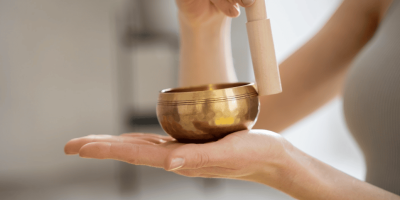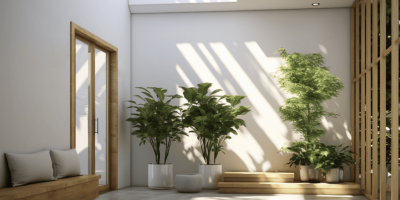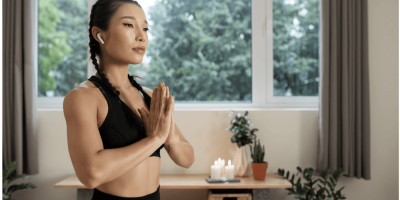Image source HGTV
- Japandi is the new interior design that merges Scandinavian and Japanese living
- The trend started in 2017 and has recently gained even more attention
- The elements of Japandi are neutral colours, choosing the right furniture, layering rugs, and a touch of nature.
Remember how everyone was so into everything Scandinavian? No wall-to-wall carpets, wood, light muted colours, clean lines, clutter-free spaces, and simple accents. Now, combine that with the Japanese sleek style of interior designing. That’s when you get this new concept – Japandi.
The Japandi interior design style is a simple combination of Japanese and Scandinavian elements, as the name implies. These two may not appear to be so similar at first glance, however, they both incorporate a lot of clean, simple, and natural elements, as well as a focus on functionality, minimalism, and the aesthetic value of modesty.
This trend that started in 2017 and has recently gained even more attention, not only creates a clean, elegant, and modern design, but it also evokes a sense of calm and serenity that is ideal for any living space.
If you’ve been following us on Instagram, you’ll know that we’re all about minimalism. That’s why we thought it’s only fair for us to talk about this new craze!
The elements of Japandi
The fusion of rustic Scandinavian and sleek Japanese style brings the perfect balance to minimalism design that is not only aesthetically pleasing but also highly functional. If you think this style of interior design is speaking your language, you’ll have to expect a slew of natural materials, muted colours, clean lines, and minimal, but well-curated, furnishings.
Japandi design isn’t sparse by accident; it’s deliberate. If you’re ready to embark on this journey, here are some tips:
1. Only neutral colour
Image source Moretti Interior Design
Bold colours may represent the strong and powerful human being that you are, but if you’re going to start decorating your house the Japandi way, you may want to say goodbye to that side of you for the time being. A muted neutral colour palette is preferred here because such tones are known to create a very harmonious and relaxing atmosphere.
So stick to shades like white, cream, beige, and oatmeal to evoke the peaceful nature of Japandi in your own home, especially on the walls. But be sure not to overdo it because it can really make your space look pale and perhaps boring.
To avoid a tasteless and almost sterile appearance, add some deeper hues to contrast these bright and airy colours. Instead of going too dark with paints, it may be a better idea to introduce some balance and richness into the design with organic elements that are naturally deeper in colour, such as tan bamboo furniture or wood flooring.
2. Choose your furniture wisely
Image source HGTV
From the start, we’ve understood that the fusion between Scandinavian and Japanese styles of interior design happened because of their similarities. But despite their beautiful similarities, they do have their differences too. In this case, it is the choice in furniture options.
Simply put, the Nordic style enthusiasts will usually go for furniture that is light in colour and modern, while still prioritising minimalism and functionality. Japanese furniture on the other hand typically has darker hues as well as more elegant and polished designs.
That’s confusing but we’re here to help. In order to successfully execute this idea in your home, just don’t be afraid to combine these two design elements. Trust your guts and you’ll certainly be able to attain the greatest effects. For instance, you can blend the straight lines of Scandi style with the curved shape of low Japanese tables and dark stained woods in your light fixtures and basic storage options.
Mix styles – don’t be afraid to use different shades of wood and mix curved and straight lines; this will add depth and variety.
3. Layers! They’re encouraged here
Image source Catest Hill
We’re talking about layering rugs.
Japandi loves the attractiveness of an aesthetic and simple lifestyle and that is its core idea. Aside from that, this style also enables you to experience some sort of peace and ease that will trigger your other senses.
As a result, introducing various-textured rugs into your area and blending them through the technique of layering may be the most effective technique to achieve this comfortable yet quiet feeling.
So the tip is, when stacking your rugs, stick to bright and neutral colours, but don’t be afraid to mix different fibres and designs. That way, you will be able to incorporate additional texture and dimension into your space while still keeping to this simple design strategy this way.
4. We love nature
Image source My Domaine
As living sustainably becomes more of an important topic, Japandi style is huge on that too. Hence the prominence of natural materials and basic designs is an excellent green décor style. There’s no surprise that Japandi’s popularity increased given that more and more consumers are interested in eco-friendly aesthetics.
Not in a way where you bring in whatever natural materials that are in your garden. You achieve the look by introducing plenty of greenery in the form of houseplants, which will provide fresh, crisp air and generate a naturally tranquil ambience. One way you can go about with this tip is by allowing as much natural light in as possible by using large windows or glass doors.
However, because this may not be possible in all settings, a viable option might be upgraded indoor lighting options, as well as large mirrors to bounce off the available natural light.
In a nutshell
That’s all that we have for you decor lovers.
We’re definitely in love with this interior design style. The similarity in designs that complements each other and the differences that enhance what the other is lacking in – truly a perfect minimal style.
So much to love about this style but it means nothing if you don’t take these tips and bring them to life! Drop us a comment if you have more useful tips about Japandi and tag us on @pokokdotasia if you have incorporated any of our tips into your journey of trying out Japandi interior design.









